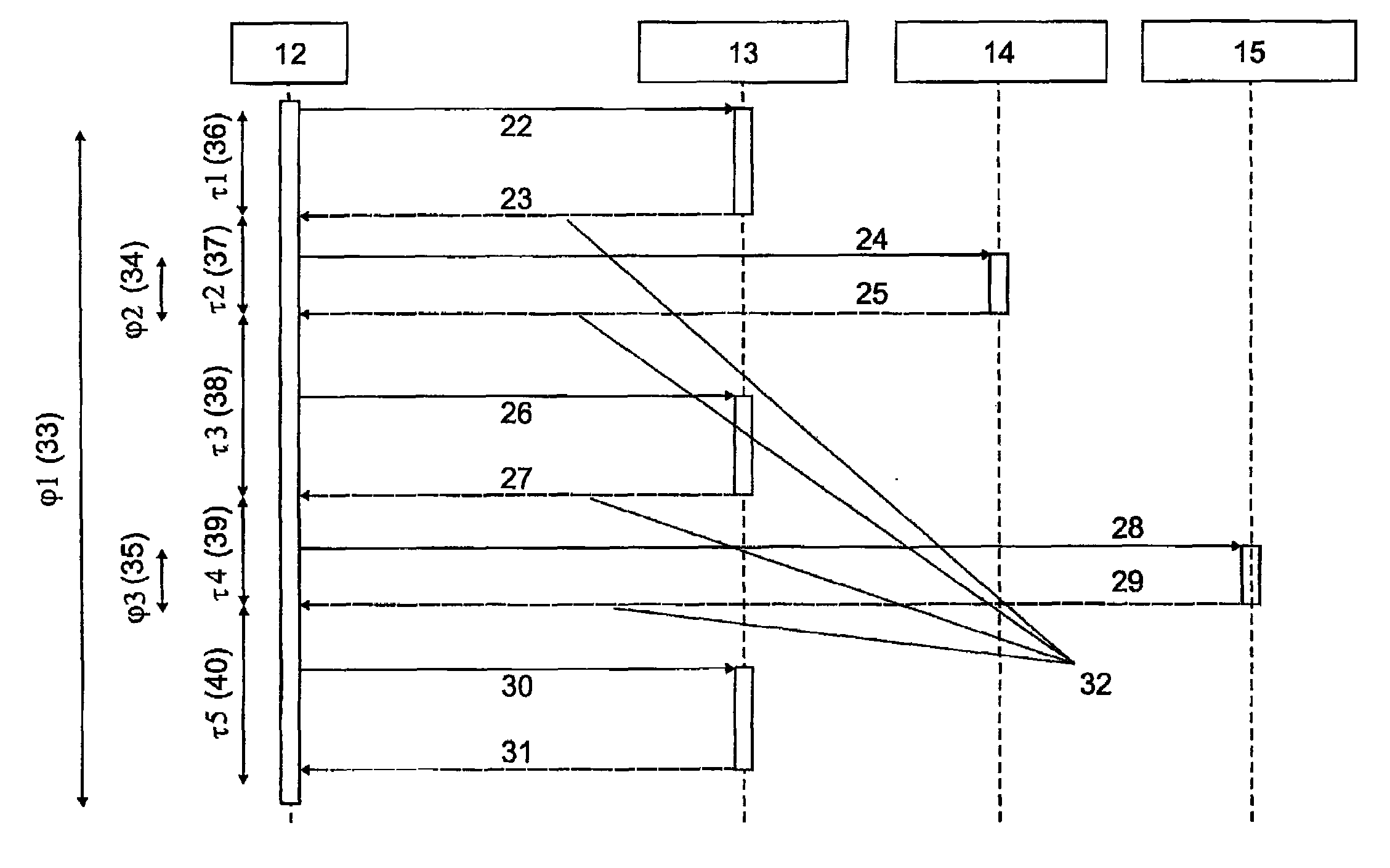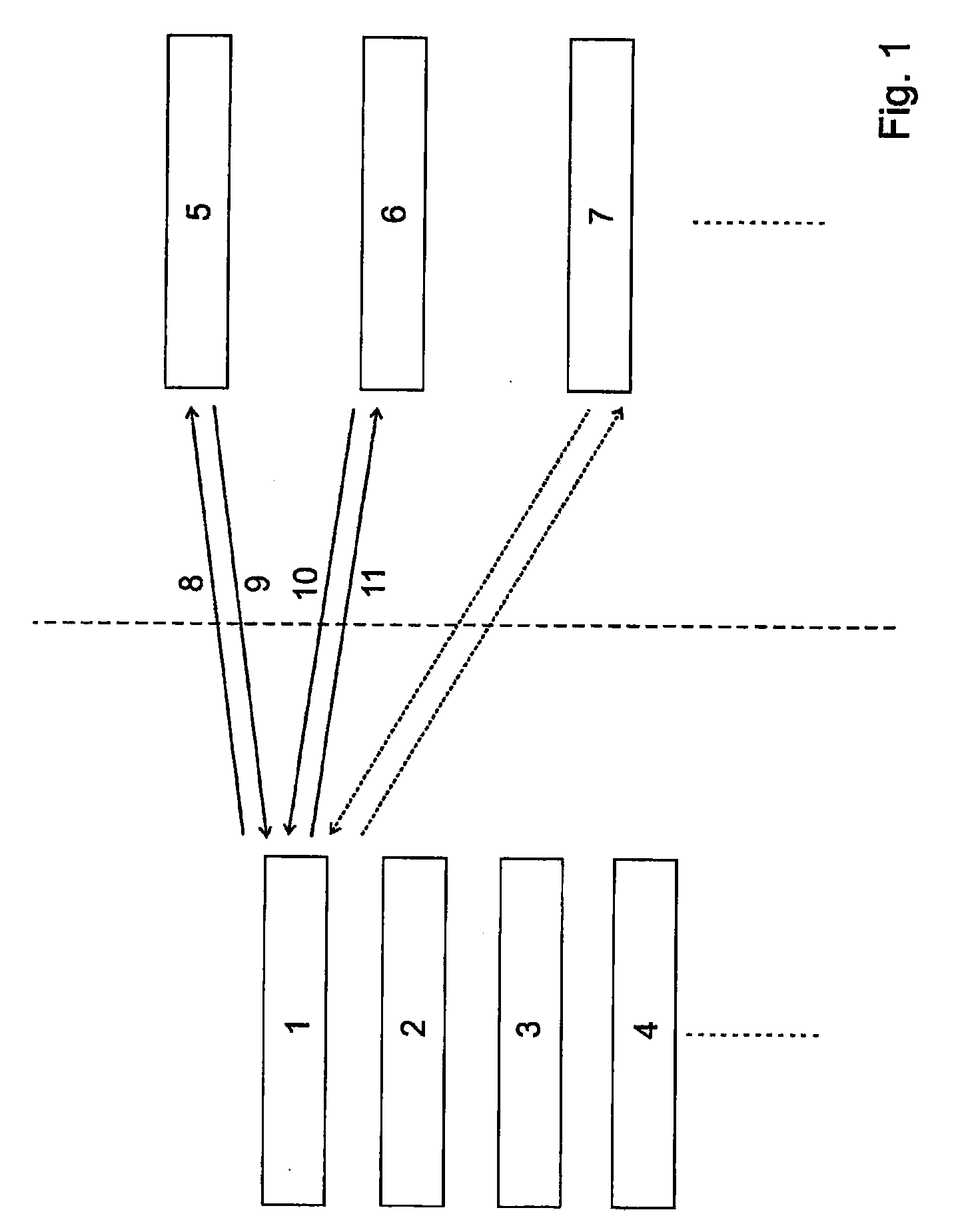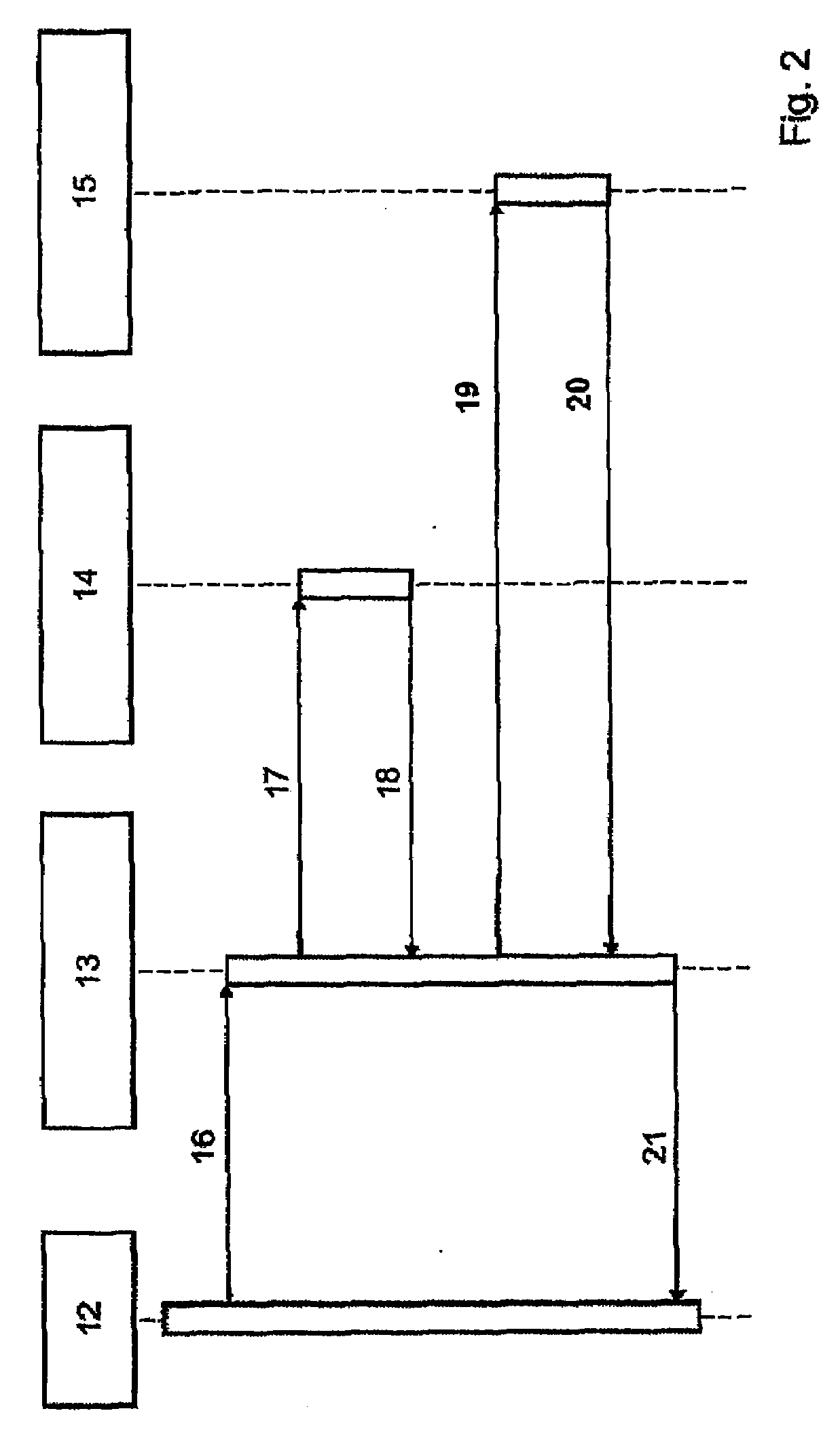Method and a system for the composition of services
a service and service technology, applied in the field of distributed computing and remote procedure calls, can solve the problems of increasing the complexity of software architectures and networks, reducing the reliability of composed services, and no indication within the web services framework, so as to facilitate interaction with the end user, increase the reliability of services, and reduce the impact of execution duration
- Summary
- Abstract
- Description
- Claims
- Application Information
AI Technical Summary
Benefits of technology
Problems solved by technology
Method used
Image
Examples
Embodiment Construction
[0044]A typical system involving a plurality of clients and a plurality of servers is shown in FIG. 1. The term client refers to a hardware and / or software terminal that can take various forms, like e.g. a regular computer or desktop 1, a laptop 2, a PDA 3, a mobile phone 4, etc. When applications—also referred to as client applications—run on this terminal, software functionalities available on other computing systems may be required, because the client terminal does not dispose of the computing resources required to perform such functionalities on its own, for example due to a lack of processing power, memory, or requested data.
[0045]The term server refers to a machine providing such software functionality, which is commonly known as a service. Servers are hence usually bigger and more powerful than clients; one can note however, that the distinction between client and server applications does not imply that the services are necessarily executed on different machines, but only tha...
PUM
 Login to View More
Login to View More Abstract
Description
Claims
Application Information
 Login to View More
Login to View More - R&D
- Intellectual Property
- Life Sciences
- Materials
- Tech Scout
- Unparalleled Data Quality
- Higher Quality Content
- 60% Fewer Hallucinations
Browse by: Latest US Patents, China's latest patents, Technical Efficacy Thesaurus, Application Domain, Technology Topic, Popular Technical Reports.
© 2025 PatSnap. All rights reserved.Legal|Privacy policy|Modern Slavery Act Transparency Statement|Sitemap|About US| Contact US: help@patsnap.com



